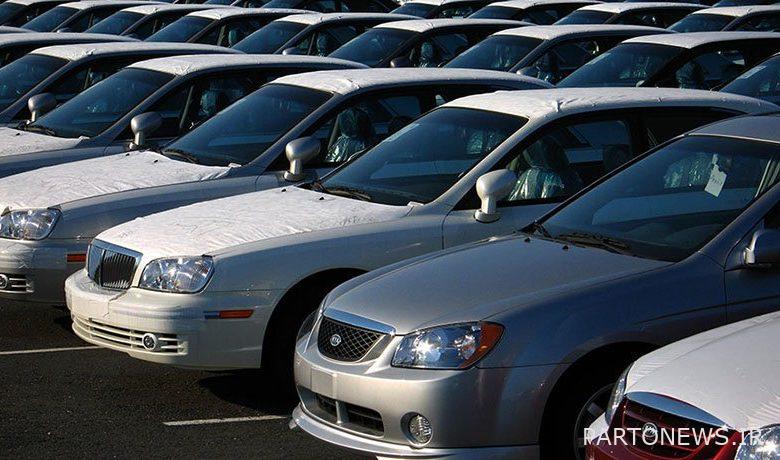Forecast of 5 events in the car market in 1401

According to reports Trade News Quoted from the world of economyLiberalization of car imports, promise of 50% growth in production, possible lifting of sanctions, privatization of Iran-Khodro and Saipa, and eventual cessation of production of old products are events that are likely to occur next year, and even if not all of them, each alone It will affect the car market. Hence, citizens with optimism and skepticism about the future of the industry and Car market The country (especially next year) has looked and hoped to reduce prices, improve quality and increase supply. This optimism, however, has made them hesitant to buy a car at the present time, a skepticism that is seen not only among open market customers, but also among applicants for automakers’ sales plans (especially pre-sales). In fact, many people, considering the possibility of positive events in 1401, consider buying a car at the present time as a risk and think that they may be able to buy cheaper and, of course, better quality cars in the future.
Looking at the five possible car events of 1401, public optimism for the future of the car market seems understandable, as their occurrence could lead to higher quality products and lower prices (in the market). In the meantime, a very important event that, if it happens, could greatly help the car industry and market, is the revival of Barjam and the lifting of sanctions. It is said that the Vienna talks between Iran and other countries on the revival of Borjam are nearing the end these days, and many are hoping to reach an agreement on the revival of Borjam in the near future. With the revival of Borjam, some of the biggest sanctions against the country will be lifted, one of which is the car embargo. With the lifting of the embargo on the country’s auto industry, positive things are likely to happen, including the return of foreign partners who can help boost production and product development, as well as strengthen the technology and quality of automakers. Of course, this is not the only positive car incident as a result of the lifting of sanctions, and it will happen to show its early effect on the market, and the main reason for citizens’ optimism for the future. Car market This is also the case. Experts predict that with the lifting of sanctions, inflation expectations and currency prices will decrease, and consequently, the car market will have a downward trend in prices. For this reason, many are optimistic about the future price of the car market, consider buying at the current stage risky and postponing it to next year, after the lifting of sanctions and its impact on the car price curve (in the market). Last year’s experience during the US presidential election (lower inflation and exchange rate expectations and, consequently, lower car prices), has shown citizens that political issues play an important role in the country’s economic situation, and therefore, the revival of Barjam and its abolition. The embargo has given them hope that car prices will fall.
But the announcement of the privatization decree of major automakers is also another factor in creating optimism among citizens about the future of the car market. According to the President’s order, government shares in Iran, Khodro and Saipa must be transferred to the private sector within the next six months. If this happens in the true sense of the word and the government leaves the car industry, we can hope for the future of this industry, although privatization alone can not lead the country’s car industry to development, but it is certainly one of its requirements. Many citizens also seem to have come to the conclusion that the government’s exit from the car industry is in the interest of the industry and its customers, as it will save it from politics, games and dictatorial policies.
Aside from privatization, the liberalization of car imports, which was recently ordered by the president and, of course, the parliament also gave permission to the government, can lower the price wick in the car market, especially in the foreign model market. The price curve of the country’s imported cars has experienced a sharp rise over the past 3 years as a result of the import ban and the growth of the exchange rate, and its aftershocks have also shaken the domestic market. Therefore, many experts and activists in the automotive industry believe that if car imports resume, there is a possibility of a 50% or even lower price drop in the import market, and as a result, the domestic car price curve is likely to decline. So even if those four things do not happen, import liberalization can lead to lower prices in the car market (especially for foreigners).
In addition to the issue of import liberalization, the “promise of 50% growth in production” (or a kind of circulation of 1.6 million units) is another important factor that has fueled citizens’ optimism. According to the promise of the President and, of course, the planning of the Ministry of Silence, the car production base in the country will reach 1.6 million units next year. Achieving this circulation will definitely help a lot in balancing the car market, while it may revive previous sales methods in favor of customers. So planning to grow production by 50%, as it can help balance supply and demand and lower prices, contributes to citizens’ optimism about the car market next year.
Another issue that can be considered as another factor of citizens’ optimism in the form of production is the elimination of old cars. The president recently issued eight car orders, one of which was to remove old cars. According to the President’s order, automakers must remove three models of their old products from production and replace them with new ones a year. In response to the president’s order, the two major automakers in the country announced the abandonment of some of their old products. According to Iran Khodro, Peugeot 405 and Samand will be eliminated next year and Saipa will leave Tiba. With the removal of old cars, however, there is optimism among citizens that perhaps better products will replace the likes of Tiba, 405 and Samand. Incidentally, the products that the automakers have announced as a replacement for the old ones are more up-to-date and have a better quality level and more features, although of course their price will be higher.
Two major barriers to mutation production
Although the five events in question will certainly be to the benefit of the automaker and its customers, and public optimism is natural in this regard, each of them faces challenges along the way.
Meanwhile, the issue of 50% growth in production is related to the challenge of providing liquidity, while it is also directly related to the lifting of sanctions. Iran Automotive has a production capacity of 2 million units, so in terms of production line infrastructure, there is no problem in achieving a circulation of 1.6 million units next year. Achieving this circulation, firstly, requires liquidity and, secondly, requires contact with foreign companies, especially in the supply sector. There are two major obstacles in this direction; One is mandatory pricing and the other is sanctions. Automotive industry activists say they have been losing money for years because of regulatory pricing policies, and often do not have enough liquidity to grow production significantly.
In fact, mandatory pricing has caused automakers to suffer huge losses and not have enough cash to supply parts, both internally and externally.
For example, according to the latest statistics, the overdue claims of auto parts manufacturers from car manufacturers have reached 467 trillion tomans, an issue that has challenged the supply of parts in a normal context. Therefore, it seems that achieving the goal of producing 1.6 million vehicles next year requires a reform of pricing, so that automakers and parts manufacturers have the necessary liquidity to produce. In addition, the lifting of sanctions is needed to achieve this goal, because when sanctions are not in place, firstly, the cost of production will be reduced and, secondly, access to foreign parts will be facilitated. If sufficient liquidity is provided and sanctions are lifted, the path of removing old cars and replacing them with new products will be paved.
Imports with tariff modification
However, liberalization of imports, although it will definitely reduce the price curve in the car market, we still have to wait and see in what context the resumption of car imports will be. Currently, there are three different plans to resume car imports, among which, the government plan, if implemented with minimum conditions and restrictions and tariff reform can be seen in it, can also play a very important role in reducing car prices (in the market). And to some extent, albeit a little, to improve the quality of domestic cars. According to many experts, limited and conditional imports with high tariffs, although they can still affect the car market, but if the government is looking for lasting effects of import liberalization as well as quality improvement in this area, should reform tariffs, at least Also consider the limitations in this process.
The government’s alternative challenge in the automotive industry
Finally, the privatization of automakers also faces challenges along the way. There is no doubt that the government’s exit from the automotive industry can help develop the industry and put an end to the policy and game policies on the “special road”, but to whom and to what part the shares of Iran Khodro and Saipa will be transferred is extremely important. The government has set a six-month deadline for the privatization of Iran-Khodro and Saipa, while during this period, a buyer with the necessary qualifications may not be found and the government may continue to cast its shadow over large automakers.

